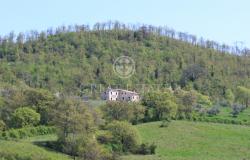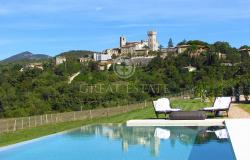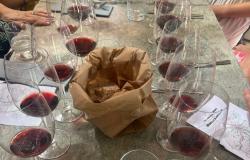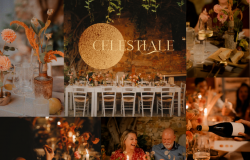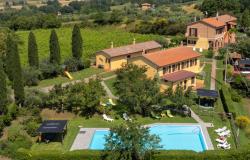 While Rome pays tribute to the dream world Marc Chagall created on canvas, this Tuscan port is showcasing the poetry of the Russian artist's etchings and prints.
While Rome pays tribute to the dream world Marc Chagall created on canvas, this Tuscan port is showcasing the poetry of the Russian artist's etchings and prints.
The exhibition runs at Livorno's Centro Arte Guastalla gallery April 14-June 24 and features 80 beautiful works.
It is a scrumptious side dish to the main course, the Chagall delle Meraviglie - Chagall in Wonderland - show of masterpieces currently on at Rome's Vittoriano complex. The Livorno works come from Chagall's three monumental etching sets.
These were commissioned by French art dealer and publisher Ambroise Vollard in the 1920s and 30s, when the Russian was at the peak of his powers.
"In his etchings, Chagall could not use the blues, reds and purples that made his painting distinctive," organizers said.
"So he entrusted himself totally to swift, nervous strokes made with the skill and innovation of a genius".
Vollard commissioned the first of the sets in 1923 to illustrate an edition of Dead Souls, the classic novel by Russian-Ukrainian writer Nikolai Gogol.
The publisher was so satisfied with the results that he then got Chagall to illustrate the Fables of French poet Jean de La Fontaine.
La Fontaine's 240 fanciful poems were the perfect springboard for Chagall's imagination.
Like La Fontaine, Chagall loved rural life, populated his works with animals and gave them a dream-like feel.
Some of these works were subsequently completed by Chagall with the meticulous application of watercolors by hand. Prints from Chagall's set of 100 black and white etchings illustrating the Bible are on display in Livorno too. The Rome show of 180 works, meanwhile, runs until July 1. Chagall (1887-1985) was involved in modern art movements like Cubism and Fauvism but he stayed at the margins, assimilating the developments into his own unique style.
He grew up the eldest of nine children in a poor Russian Jewish family in Vitebsk, a town in present day Belarus.
Throughout his long career the artist drew inspiration from his Jewish heritage and from Vitebsk folk-life, transmitting the zest and child-like wonder he first experienced it with.
The Rome exhibition starts with some early works painted during a three-year spell in St Petersburg (1907-10) in which he studied and established a name for himself.
These include the daring Red Nude and his first major work, The Dead Man, depicting a body laid out on the street, a mourning wife and a fiddler - a favourite Chagall motif for life's changes.
In 1910 the artist moved to Paris, where he stayed until the start of World War I.
In the French capital he absorbed the Fauves use of colour and the Cubists' broken planes and geometry.
This can be seen in several of the works on display, such as Self Portrait with Horse (1911-12).
The Rome exhibition also features some of Chagall's most celebrated paintings after his return to Russia and his marriage to his much-loved first wife Bella Rosenfeld.
These include a 1915 oil, The Jew in Red, a portrait of an old man weighed down by the years, and the much more light-hearted Over the Town (1917), which shows love lift the artist and his wife above Vitebsk.
After the Russian Revolution, Chagall did not thrive in his post as a Soviet Culture Ministry art commissioner and moved back to Paris in 1923.
He escaped the Holocaust thanks to an American journalist who helped him get out of Nazi occupied France and reach the United States in 1941.
He returned to Europe in 1946 and settled in the south of France three years later. He died in the town of Saint-Paul de Vence aged 97 in 1985.

